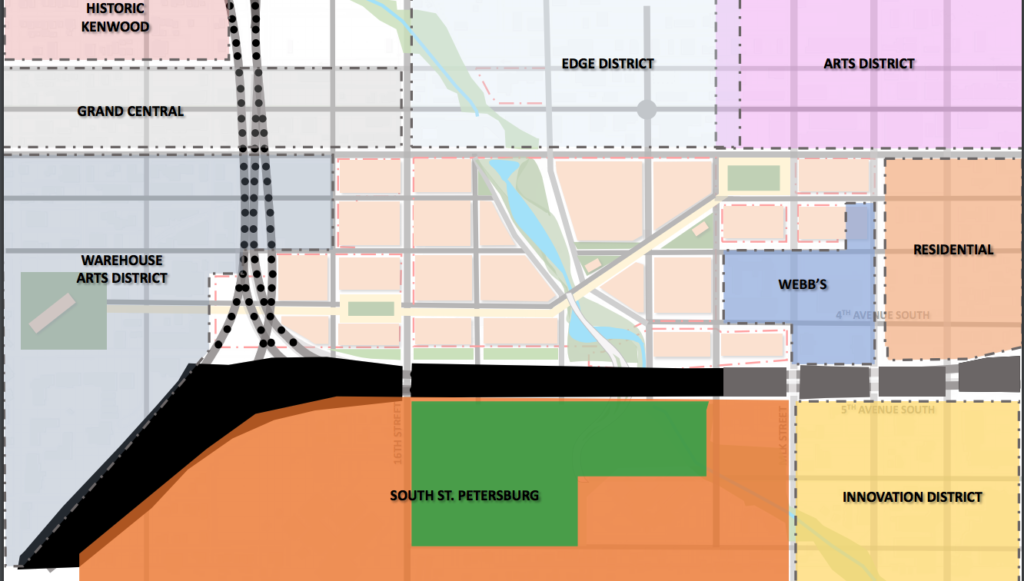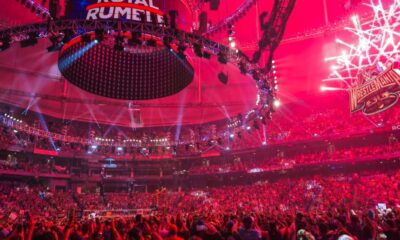Thrive
The Gas Plant District: Envisioning Tropicana Field site without Tropicana

A packed crowd joined St. Petersburg city economic development staff and the team from HKS architects at the University of South Florida St. Petersburg’s Student Center Monday evening. The meeting centered around what could be the most important development project that St. Petersburg has seen in decades: The reimagining of the Tropicana Field site, without Tropicana Field.
Since 2016, The City of St. Petersburg has been working on plans for the redevelopment of the acreage. After the Rays announced their search for other locations in Tampa Bay, the City has been developing plans under two scenarios – with or without the Rays stadium. City staff and architects finalized a plan for the site with the stadium in late 2016 and released it to the public in March 2017.
Now, they must do the same for the site without the stadium.

This rendering shows the potential expansion and enhancement of Booker Creek, which runs through the site.
A complex history has played out on the 86-acre site where Tropicana Field now sits. Once the home to a bustling African American community, known as the Gas Plant district, nearly 800 people lived in the district prior to Tropicana Field’s construction. In the early 1980s the neighborhood’s homeowners were given relocation vouchers, and the entire district was bulldozed – razed to make room for the stadium and its many parking lots, along with I-275 and I-175 thoroughfares.
Now, nearly 40 years later, the City of St. Petersburg is in the midst of planning major changes to the site, including a return to the district’s former moniker – the Gas Plant District. As for the features of the site itself, non-negotiables seem to include the incorporation of housing, retail, and office space in mixed-use building designs. Other features are varied and wide-ranging, including green space conservation, enhancement of Booker Creek and possible amenities like a university, cultural arts center, incubator, promenade and/or convention center.

This screenshot of the presentation by city officials and HKS architects shows the physical barrier of I-175 between North St. Pete and South St. Pete neighborhoods.
Pinellas County’s age-old problem of transportation has also been resurrected once again, prompting city officials and HKS architects to bring forward solutions like bus rapid transit, reconnecting the district’s streets into the rest of the city’s grid system, and the possibility of changing I-175 to ease the physical barrier it creates between the North and South sides of St. Petersburg, integrating pedestrian crossings across the now impermeable highway structure.
The City has said there is still time for the public to share their opinions about what should be included in the Gas Plant District final plan, but time is quickly running out. City development staff and HKS architects will look to finalize the plan by the end of September. They plan to present to finalized plan to City Council in October.
To see the full presentation from Monday night’s meeting, click here for the PDF.







